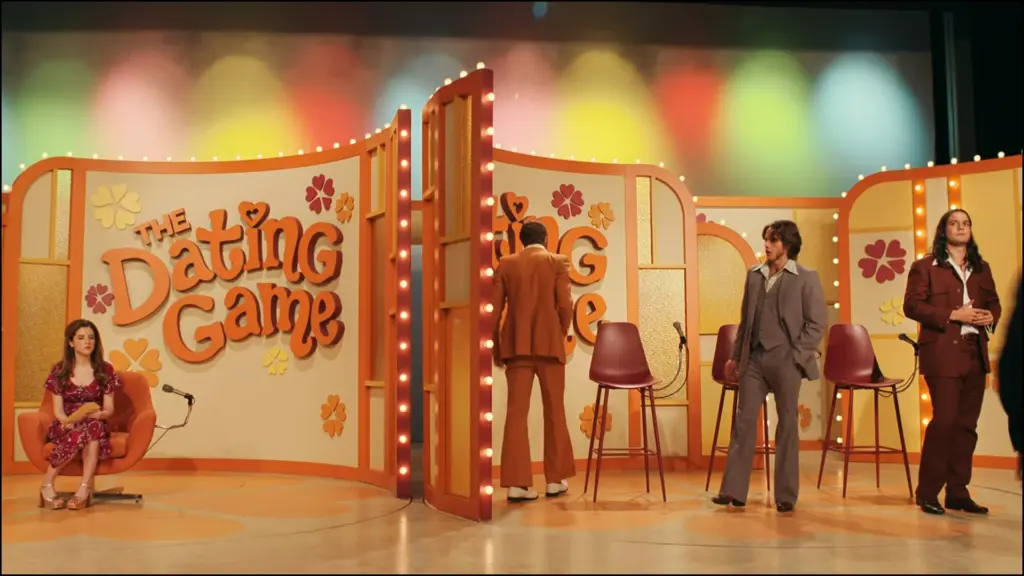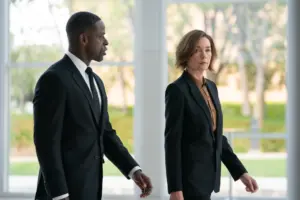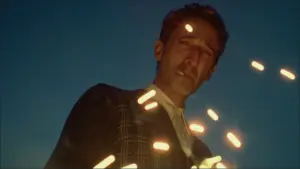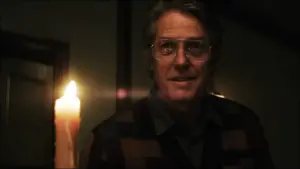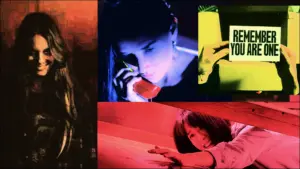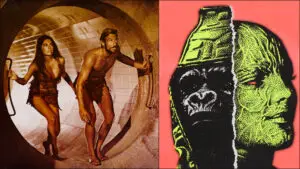Too many true-crime stories about serial killers exist less as cautionary tales than invitations to revel in depictions of sadistic attacks. Not all of them: Zodiac (2007), for example, looked beyond the slayings and at those whose lives were altered in the aftermath. The worst true-crime dramas, though, are the ones that become inspired during killings then turn perfunctory for everything before and after. Real-world killers don’t deserve fame on par with those who make things, solve problems, or bring joy to people’s lives.
I’m glad to say that Woman of the Hour, starring and directed by Anna Kendrick, side-steps these pitfalls. The satisfying, minor-scale drama uses the real-life story of predator Rodney Alcala, who appeared once on The Dating Game TV show in 1978, to make thematic points about the tentativity and danger lurking within simple interactions between men and women (and in at least one scene, men and men).
Though the movie de-emphasizes the killer, it hints at the basics: Alcala’s sex assaults and murders spanned several years and states, beginning in the New York area in 1968, but mostly around Los Angeles until his arrest in 1979. Working as a freelance photographer, he lured victims to secluded locations under the guise of building his portfolio. Though Alcala was convicted of only a few murders, his cache of snapshots incidcated more than a hundred victims.
Alcala is introduced in a stand-alone scene that first centers on the victim, a woman named Sarah (well-played by Kendrick’s Pitch Perfect alumna, Kelley Jakle). Hiking in a remote hilly area, she confesses a recent personal heartbreak to the stringy haired shutterbug, who consoles her while egging on her disclosures and snapping pictures as if trying to capture her soul.
Playing the killer, Daniel Zovatto has a shiver-inducing presence that starts with a curious charisma, then a sly grin that curdles into a glinting-metal tooth-revealing sneer, and stiffens to sociopathic blankness reminiscent of doughy faced Vincent D’Onofrio, or Javier Bardem in No Country for Old Men. Each of Zovatto’s scenes reveals ways the killer has cracked the code of pretending to listen to, and care about, women’s thoughts and feelings — but only as a higher-level means to manipulating and victimizing them.
Though the film includes (often non-chronological) scenes of three killings Alcala is known to have committed, most of Woman of the Hour explores disconnection between people in ordinary circumstances. For her directing debut, Anna Kendrick adapts her fast-chatter acting skills with purpose. There’s a lot of one-on-one dialogue in the movie, but it it doesn’t feel “talky” — it feels like it’s building to something. Comfort zones are perpetually shifting: A conversation starts neutral, then a remark or reaction adds a note of unease, until there’s such a blanket of tension that the conversation is besides the point. People often aren’t fully listening while they put on a show of it — as well as when they’re in a show.
We first see Kendrick’s character, who has the very 1970s-sounding name Sheryl Bradshaw, in an interview room while two young casting directors talk about her as if she’s not there, then ask if she’s willing to do nudity (casually commenting on the apparent size of her breasts). Such humiliations have become common for Sheryl, whose two years in L.A. have gotten her nowhere. The only person with a sympathetic ear (besides her agent) is an apartment neighbor (Pete Holmes) — an also-aspiring actor who eagerly helps her “run lines,” but ingratiates himself too overtly, indifferent to boundaries.
In one of the film’s several male/female exchanges, Sheryl and the neighbor go out for drinks, and what starts as innocuous gradually becomes tainted by unmatched motives and mindsets — and hair-touching. Instead of saying “Don’t touch my friggin’ hair!,” Kendrick’s character turns into a pushover, willing to appease if it means the awkwardness stops.
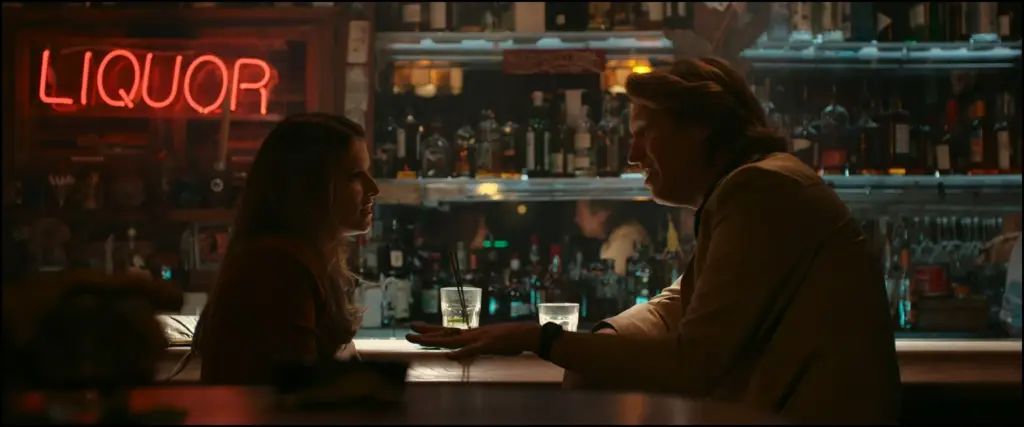
The film sets up small parallel scenes: In each, the man listens to a woman who warms to his attentiveness, tells her she’s beautiful, then touches her hair. The woman then has a flash of realization; has she let her guard down too soon? When the neighbor’s offer to buy a second drink is repeated later in the movie, Sheryl identifies the seemingly friendly gesture, and similar hair-touching, as a warning.
Sheryl’s lack of assertiveness builds to a defiant reversal in the film’s centerpiece: The Dating Game show. Scraping the bottom of the acting-exposure barrel, she accepts a spot as the chooser who will ask three eligible men kitschy, innuendo-filled queries from behind an on-stage partition. Though the initial salvos are scripted, the show’s silly, anything-can-happen vibe encourages each contestant to “be yourself,” and Sheryl’s final decision is her own. The prize for both will be an all-expense-paid weekend “date” — such as a low-budget jaunt to nearby tourist town, or admission to Magic Mountain.
If you haven’t seen the real Dating Game (or its spin-offs), look it up for some cringe-campy media history. Several celebrities clocked camera-time there, including Sally Field (mentioned in the movie), Farrah Fawcett, Suzanne Somers, Tom Selleck, Michael Richards, Andy Kaufman, Steve Martin, Burt Reynolds, Phil Hartman, and even Arnold Schwarzenegger.
Along with The Newlywed Game, it was part of a double whoopee, er, whammy of programs on the privacy-versus-publicity continuum, where norms of romance and companionship have increasingly been commodified for fame and material benefit. The recent end includes dumbass programs like The Bachelor and The Bachelorette that actively arrange sex lives and marriages, or Love Island, which might as well be titled Fever Blister Reef or Condom Archipelago. Years ago I caught an episode of MTV’s Singled Out where the hyper-sexualized questions achieved postmodern satire. (One young blond competitor said her hobby was filling a bathtub with Jell-O and sitting in it, while another claimed an insatiable oral fixation to which the bachelor responded, “Woo! That sounds sweetness! [sic].” Of course the latter won. I was rooting for Jell-O girl.)
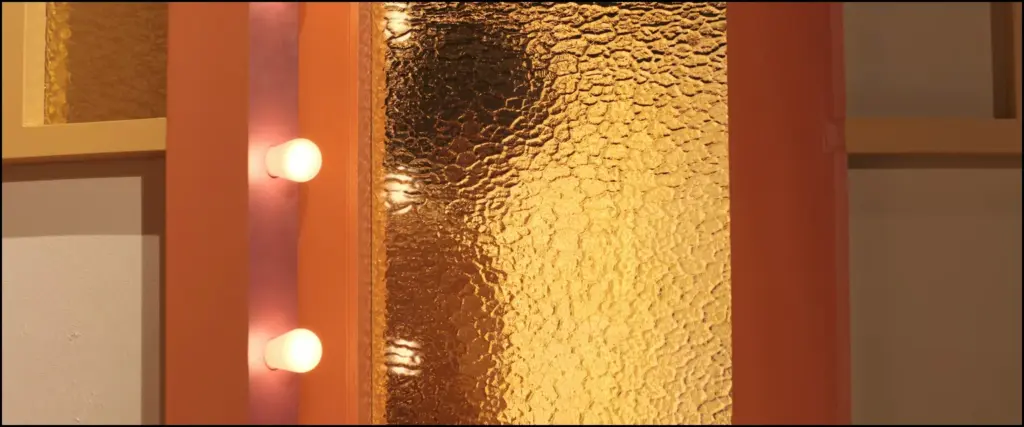
Years of American Idol letdowns and Fear Factor donkey-semen chuggings later, reality shows are ubiquitous. Friendships get forged at Survivor finale parties, tear ducts dehydrated by The Biggest Loser weigh-ins, and seemingly anyone can launch a look-at-me career on YouTube, TikTok, Vimeo, NosyVoyeur, and BlorpBlump (I made the last two up) channels for everything that won’t upset a content algorithm. I’ve binged my share of Floor Is Lava, Is It Cake?, and LEGO Masters shows — sniffling over a catastrophic brickfailure or three. It’s fun to watch talented people building cool things that they then eat or smash. And satisfying to see an arrogant dork whack his gulliver on purple padding while falling ass-up into Kool-Aid.
Nonetheless we’re on the cusp of re-electing a louse whose edifice of public stature was built on contrived puffery from 14 seasons of a hit reality show. That asshat’s well-documented misbehavior ties in with Woman of the Hour: The instinct to dismiss or demean women, or simply reduce them to how they are “useful,” while pretending to care about their concerns, is the movie’s subtext. Nice as it would be to dismiss the story’s overt, male-gaze sexism as ancient history, a glance at current politics, and popularity of “influencers” like Andrew Tate, should jar us awake.
Director Kendrick, working from a screenplay by Ian McDonald, explores these ideas persuasively. Though at times the film leans too hard into the “men are cads, women must navigate a minefield” dynamic in a way reminiscent of Elisabeth Moss‘s fifth-season Handmaid’s Tale twists or Invisible Man gaslighting movie, Kendrick allows for glimmers of grace (as in a redeeming subplot starring Nicolette Robinson and Max-Lloyd Jones). This becomes important during The Dating Game show, where the killer really was a contestant seeking to date a woman named Cheryl (fictionalized in the movie to Sheryl) Bradshaw, with the movie’s account diverging so it can make thematic points.
Much like the portentious quiz show in Magnolia, the scene is augmented by backstage, around-the-edges mini-drama. After seasoned, chain-smoking makeup women encourage her to ignore the host’s formulaic directives and go fully off-script, Sheryl decides to undermine the show’s sexist assumptions with pointed questions that thump away at the male contestants’, and the show’s, hollow drum. Soon she’s grilling the gents about moral philosopher Immanuel Kant (the host later refers to her by a slur similar to “Kant”), and confounding them with: “What are girls for?” Male contestant #1 (Matt Visser) is humorously discombobulated, while contestant #2 (Jedidiah Goodacre)’s cocky overconfidence slips into panicked-bro backpedaling.
Kendrick’s performance, restrained elsewhere, finally digs in here, deploying high-level sarcasm while maintaining a steely smile. She plays the moment less as catharsis than punk-rock monkeywrench. Sheryl’s game-changing aggression doesn’t change the results — she still follows the rules and makes her choice — and career self-sabotage is a lot to trade for self-respect. But Kendrick excels at truth-blasting, using her sharp-angled face and clipped, controlled anger as if carving the insincere air into pathetic fragments.
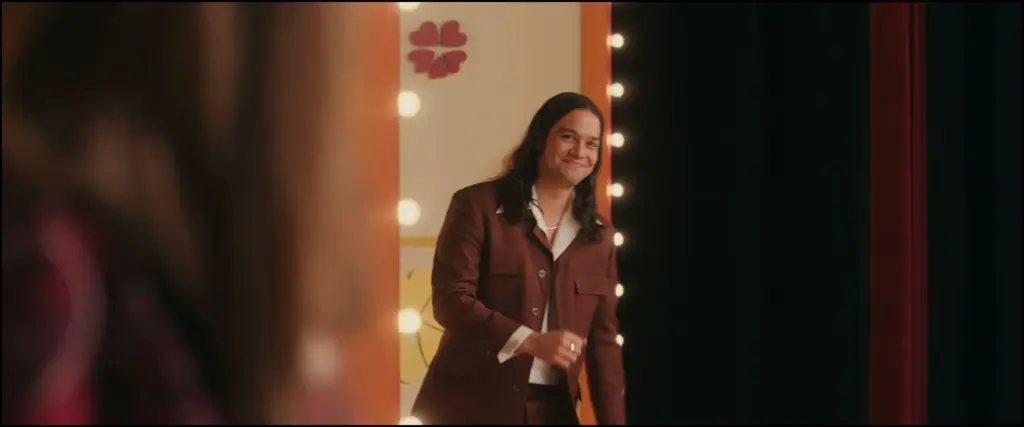
Just as in real life, Sheryl eventually chooses the worst possible contestant — the one far too well-versed at bypassing suspicion, whether during a game show or posing as a budding Ansel Adams. When contestant #2, aware of contestant #3’s psychotic nature, later warns Sheryl “don’t trust that asshole,” it’s one of the movie’s fine, chilling moments of connection (it reminded me of a scene in the terrific 1999 movie Go).
Kendrick shrewdly gives ominous, metaphoric significance to the partition between the inquisitive woman and her unknown suitors. The suffocations of the killer are matched by the stale 1970s style, from large flower prints on the show’s set walls (resembling no-slip shower surfaces for sideways giants), to an ugly array of mismatching patterned shirts and extended-collar, hem-stitched jackets that make everybody look like they showed up in their Picture Day best from the J.C. Penney catalog. Tony Hale‘s sour-faced gameshow host (real host Jim Lange seemed far more genial) may dress groovy and accessorize with mutton-chop sideburns, but his metal-rim glasses and preference for Rat Pack-era songs over modern “Negro” music hints at an entertainment industry straddling the retrograde and progressive mindsets of two different eras.
After the show, Sheryl and Rodney go out for a drink, and the movie’s 1970s Los Angeles style peaks inside a dark tiki room (the building looked drab from the outside, she notes — a very L.A. phenomenon). Their pre-date date, and a parking-lot walk to her car, build to a harp-string’s high-note tension. Kendrick understands the Alfred Hitchcock principle that it’s not about what happens; it’s about the growing awareness of what may or may not happen. She also juggles cloistered spaces and agoraphobic expanses with ease, as if well-studied in both Rope and North by Northwest.
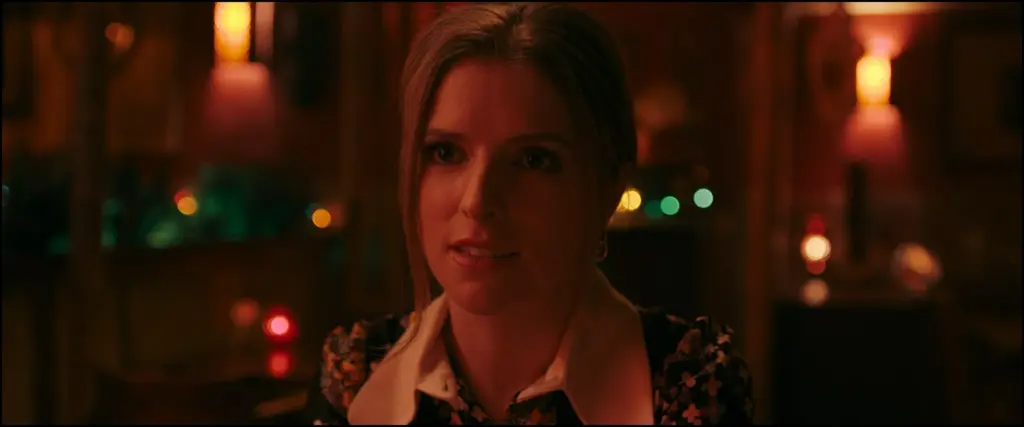
Several scenes reminded me of Hitchcock’s Frenzy, depicting women’s levels of guard and comfort when alone with men. Kendrick takes care during assault scenes to pan away as if saying “you don’t need to see this,” whereas in Frenzy, Hitchcock only did that the second time around…
Better yet, Kendrick and screenwriter McDonald give each victim a backstory and a sense of a fully lived, distinct experience, to the point where any one of them could have been characters in their own movie. As mentioned above, the first scene’s victim is excellently portrayed by Kelley Jakle. The second victim, a stewardess in New York, appears on the verge of real adventure, and Kathryn Gallagher grants her a lovable, butch energy that makes you sorry she ever tripped on yellow paint and missed her appointment with furniture movers.
The third victim, whose story opens and rounds out the movie, is a teen runaway portrayed with a feral glow by Autumn Best. What happens with her has an intriguing psychology to it, because she is the one whose instincts (likely honed from adapting to other traumas) crack the killer’s own code.
Though Kendrick’s character has departed the story (she really is the woman of just “the hour,” offscreen for a good third of the movie), Best vividly fills the remainder, signaling awareness with just glances, gazes and reactions. Woman of the Hour is worth seeing for such performances and details, even for those with little interest in notorious serial killers — who, in this story as in others, remain the world’s biggest losers.

